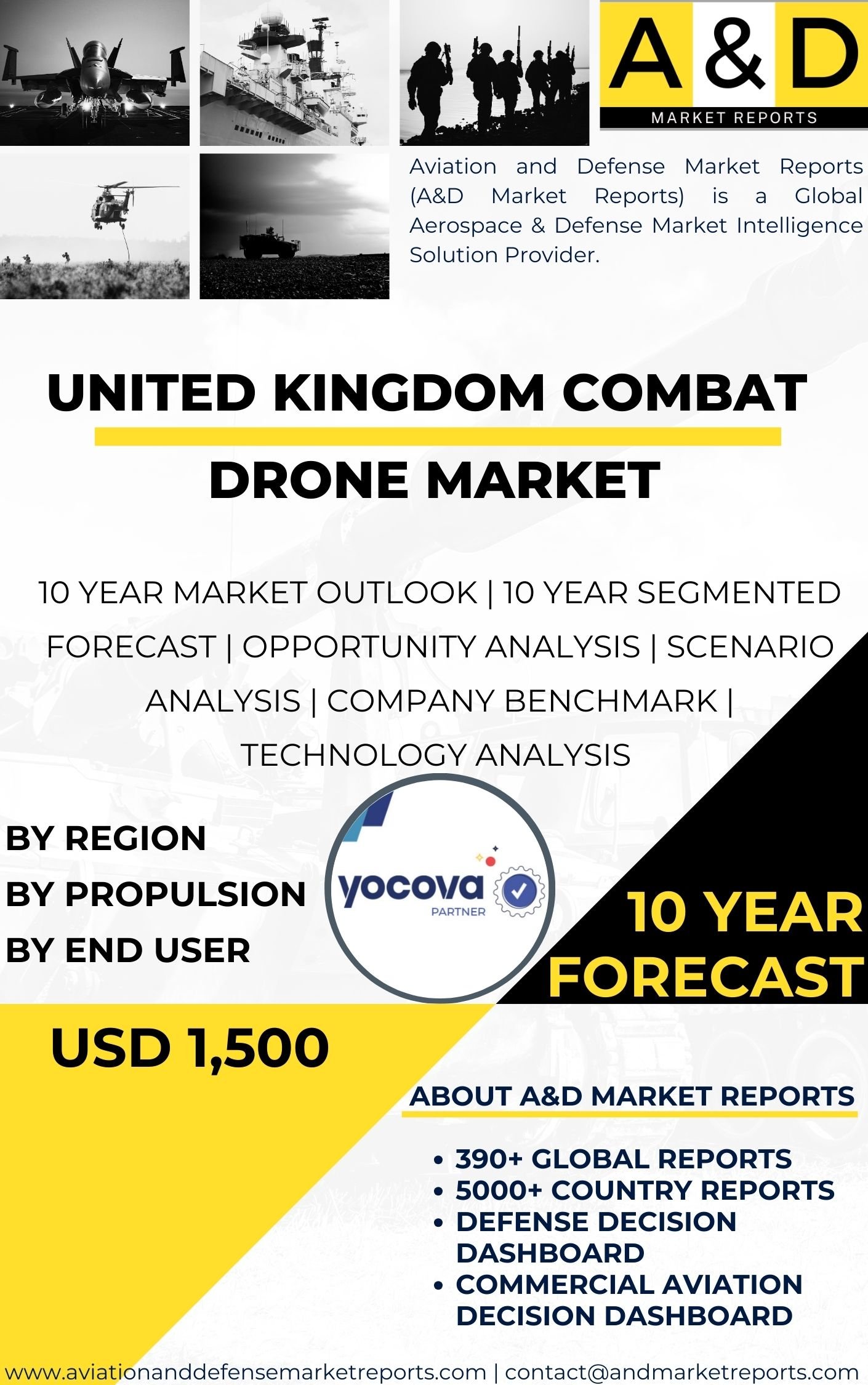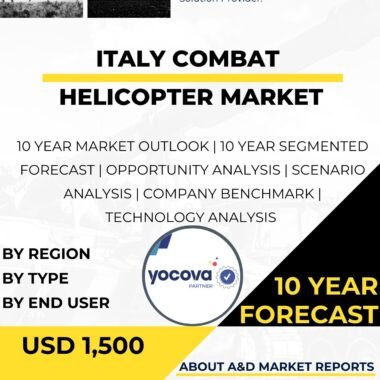Description
United Kingdom Combat Drone Market: Overview
The United Kingdom combat drone market is a rapidly evolving sector of the defense industry. Combat drones, also called unmanned combat aerial vehicles (UCAVs), are remotely operated or autonomous aircraft with weapons and surveillance capabilities. They enable the United Kingdom to conduct reconnaissance, intelligence gathering, and precision strikes while minimizing risk to personnel.
Strategic Importance of Combat Drones
Investment in combat drones reflects the United Kingdom’s commitment to maintaining a technologically advanced armed force. These unmanned systems are crucial for intelligence gathering, target acquisition, and kinetic operations. They allow the military to respond quickly to a range of threats and operational challenges.
Domestic Development and International Collaboration
The United Kingdom combat drone market benefits from both domestic production and international partnerships. Companies like BAE Systems and Rolls-Royce design drones tailored to the specific needs of the UK Armed Forces. They leverage aerospace engineering, AI, and sensor integration to deliver advanced drone capabilities.
International collaborations support cost-sharing, technology transfer, and diplomatic cooperation. They also strengthen defense ties with allied nations while accelerating innovation in drone development.
Types of Combat Drones
The United Kingdom operates a variety of drones, from tactical reconnaissance drones to medium-altitude, long-endurance (MALE) UCAVs. Tactical drones are small, hand-launched systems that provide close-range surveillance. MALE UCAVs have longer flight times, greater payload capacities, and advanced sensors for extended operations.
A prominent example is the Protector RG Mk1, based on the General Atomics MQ-9B SkyGuardian platform. This MALE UCAV carries sensors, communication systems, and precision munitions, offering persistent ISR and strike capabilities for counter-terrorism, border security, and expeditionary missions.
Operational Applications
Combat drones support a wide range of military operations. In counter-terrorism missions, they provide persistent surveillance and track high-value targets with minimal risk. In counter-insurgency operations, drones enable precise strikes to disrupt hostile networks.
Drones also assist in humanitarian and disaster relief missions. High-resolution sensors help with search and rescue, damage assessment, and disaster management, providing real-time data for decision-making.
Training and Safety Protocols
The United Kingdom Armed Forces conduct extensive training for drone operators. Personnel learn piloting, sensor operation, and mission planning to maximize drone effectiveness. Strict rules of engagement and adherence to international humanitarian law guide drone operations, ensuring civilian safety and responsible deployment.
Challenges in the United Kingdom Combat Drone Market
Rapid technological advancement requires continuous research and development. Integration of multiple drone systems demands careful testing to ensure interoperability. Ethical and political concerns also arise, particularly regarding targeted strikes and sovereignty issues. The United Kingdom adheres to international law and human rights principles to address these challenges.
Future Outlook
The United Kingdom combat drone market is poised for continued growth. Domestic innovation, international collaboration, and strict operational protocols ensure a credible and effective drone capability. These systems enhance military readiness, support targeted operations, and provide critical intelligence and humanitarian assistance worldwide.




